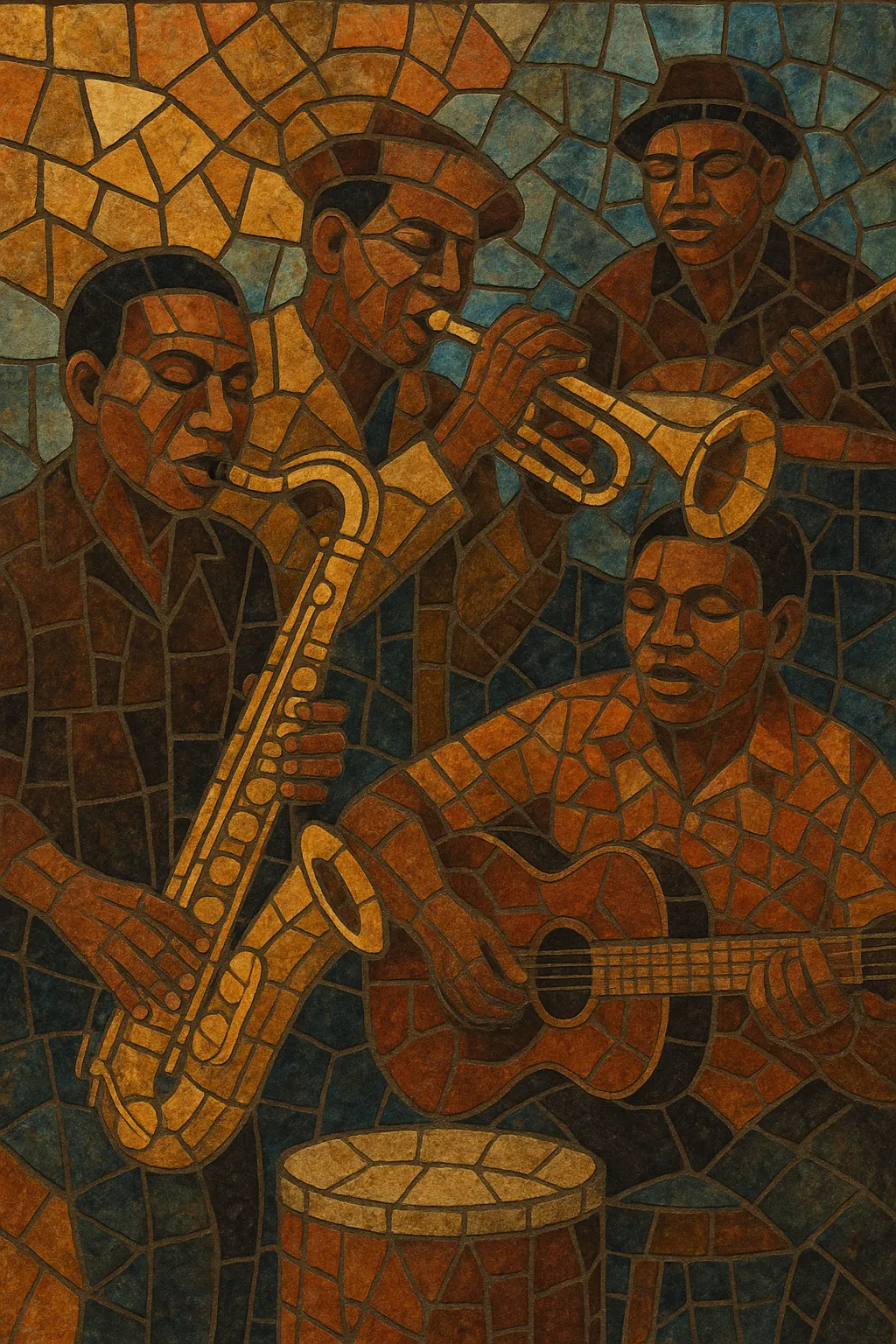Bulawayo jazz is a Zimbabwean urban jazz style that emerged in the city of Bulawayo during the late colonial era. It blends American swing and big‑band jazz with South African township idioms such as kwela and mbaqanga, while drawing on local Ndebele and Kalanga song forms and dance rhythms.
Typically horn‑led and dance‑oriented, the style features catchy melodic riffs for saxophone and trumpet, interlocking rhythm guitar, walking or shuffle bass, and jive‑inflected drum grooves. Call‑and‑response vocals—often in Ndebele, Shona, or English—tell stories of township life, work, love, and nightlife. The international hit “Skokiaan,” recorded by August Musarurwa’s Bulawayo band and later covered by Louis Armstrong, is the best‑known exemplar of the sound.
Bulawayo jazz took shape in the townships of Bulawayo (then Southern Rhodesia) where railways, industry, and migrant labor created a vibrant nightlife. Musicians absorbed American swing and jump‑blues records and the South African township sounds of marabi/kwela/mbaqanga, adapting these to local social dances. August Musarurwa (also spelled Msarurgwa) and the African Dance Band of the Cold Storage Commission became emblematic of the style; their tune “Skokiaan” (popularized globally in 1954) projected the Bulawayo sound to international audiences.
The scene coalesced around township halls and workers’ clubs in Makokoba and other neighborhoods. Vocal harmony groups and horn bands—precursors to the famed Cool Crooners—mixed close‑harmony crooning with bright horn riffs and jive rhythms. Repertoires blended original compositions with localized jazz standards, performed in Ndebele, Shona, and English. The music’s danceability and urbane image made it a symbol of modernity for a growing African urban middle/working class.
From the 1960s onward, electrified guitar bands and later jit, chimurenga, and sungura styles eclipsed big horn ensembles, but Bulawayo jazz’s melodic horn writing, shuffle/swing feels, and township storytelling left a strong imprint. Veteran groups such as the Cool Crooners sustained the style, while Bulawayo‑based Afro‑jazz artists carried forward its crooner harmonies and township swing aesthetics. Today, Bulawayo jazz is celebrated as a foundational Zimbabwean urban sound—at once cosmopolitan and deeply local.


